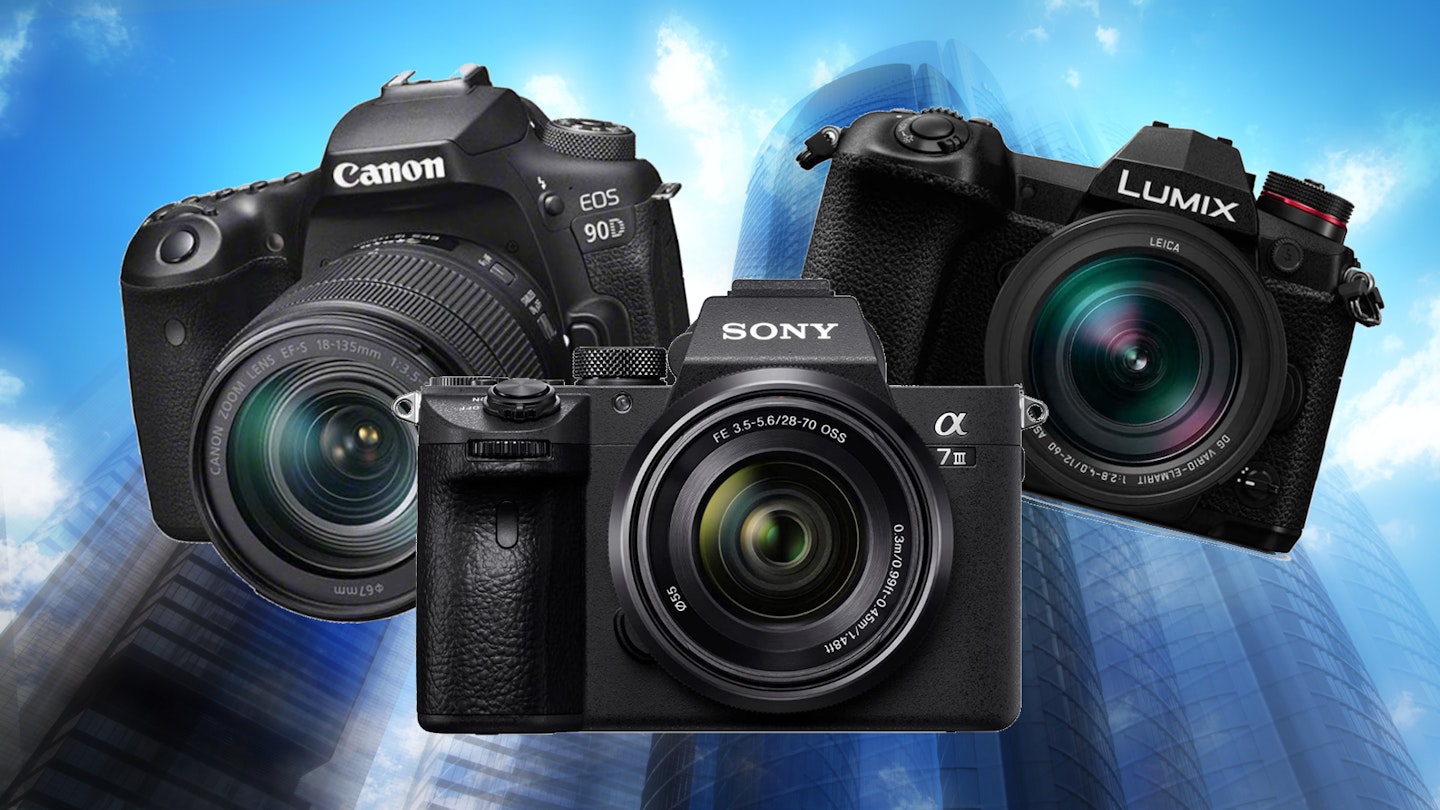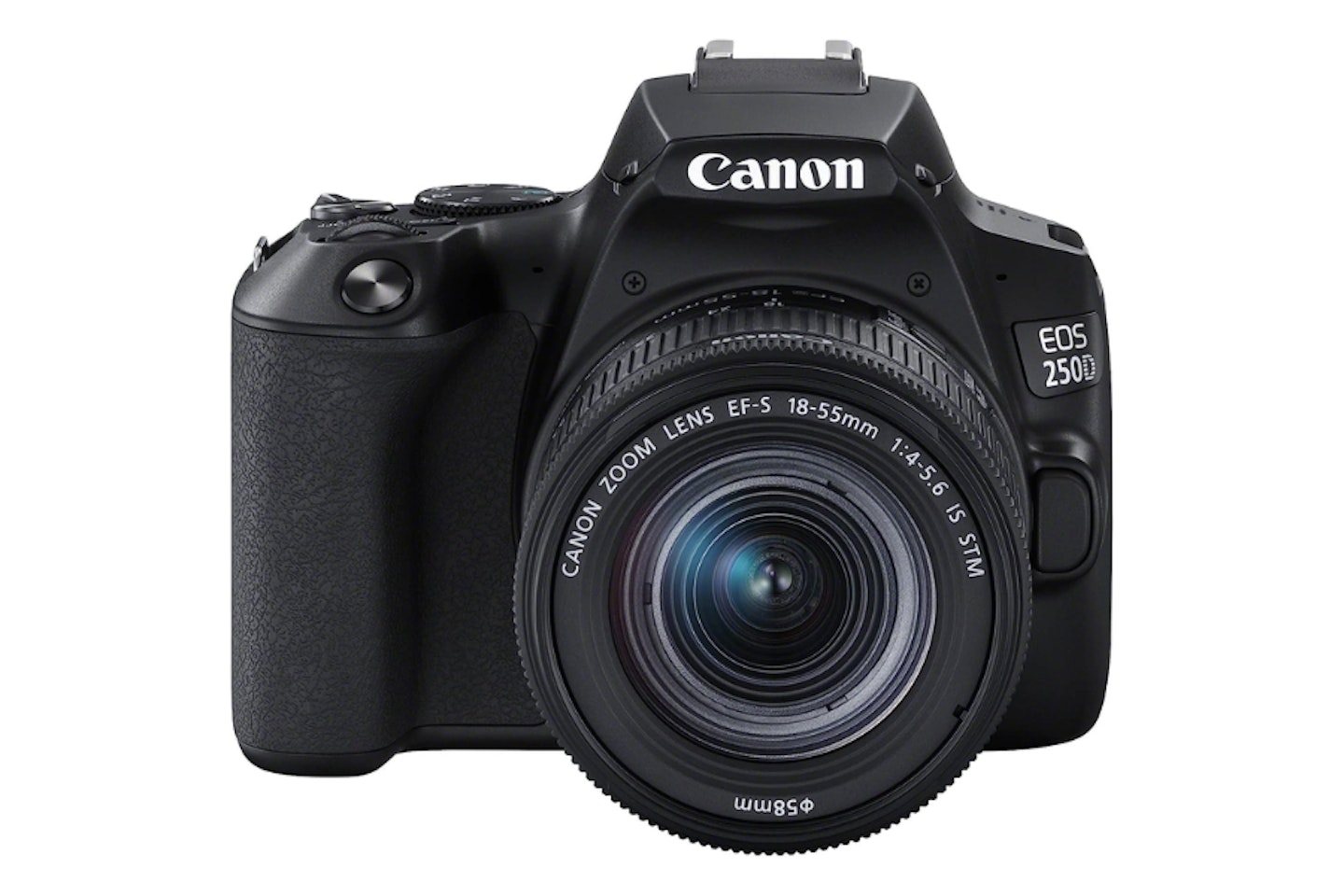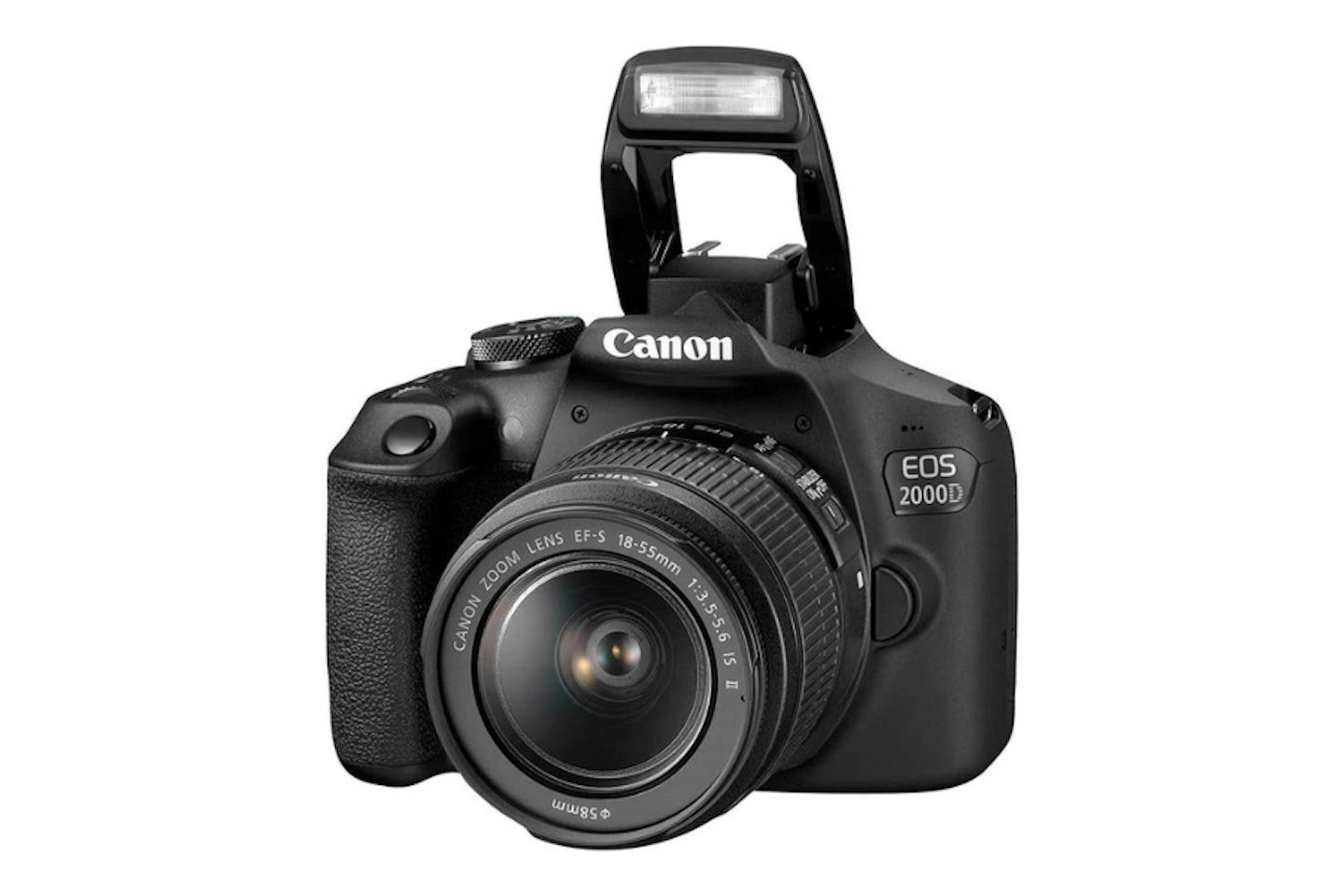The day has finally arrived - you sit reviewing the shots from your last outing and realise that your budget DSLR camera is way below par. The low pixel count is beginning to show. The only way to escape from low-detail purgatory is to finally upgrade to one of the best affordable digital cameras. Getting maximum detail from every shot, plus the freedom to digitally zoom and recompose without penalty is within your reach.
And you'll be spoiled for choice. These days, even entry-level cameras are a far leap from the 10MP sensors of old; with everything on this list sporting at least a 20-megapixel image sensor. But what we think of as a budget DSLR may be deemed too steep or too cheap, depending on your starting point. For us, we believe that great photography doesn't have to cost more than £2000, or even half that price.
But how can you make sure that your budget is spent wisely? We believe that resolution always comes first, with lens quality a close second. Put a great wide angle lens on a last-generation camera and you won't be getting the best out of it. Conversely, buying a bargain camera with a poor lens but a high-megapixel count will get you nowhere. We've put together a guide to help, along with answers to some of your frequently asked questions.
Best budget DSLR cameras of 2024 at a glance
• Best overall budget DSLR camera: Canon EOS 90D - View at Amazon
• Best budget compact DSLR camera: Panasonic LUMIX G9 Mirrorless Camera - View at Amazon
• Best affordable budget DSLR camera: Canon EOS 250D Digital Camera - View at Amazon
• Best budget DSLR camera for extra features: Sony Alpha 7 III Mirrorless Camera - View at Amazon
Our pick of the best budget DSLR cameras represents the best balance of value for money and super high resolution. Your landscapes, cityscapes, portrait photography and more will get a serious quality boost. Whether they’re the last generation, APS-C or even Micro Four Thirds, there’s something for every budget-conscious serious shooter here.
The best budget DSLR cameras of 2024
Best overall budget DSLR camera
Description
Canon's mid-range DSLR boasts a brand new 32.5MP APS-C sensor that offers a 1.6x crop factor over full-frame. This represents one of the biggest resolutions offered by Canon and easily the biggest to make its way into an APS-C – alongside its sister, the M6 MkII. At over £1,000, it might not sound cheap, but it’s on the low end for this amount of pixels and presents a good value option if you want to buy the latest generation of tech.
You also get a decent ISO range of 100-25,600, a rapid 10fps continuous shooting speed and vibrant, crisp images. You can also buy from the pool of Canon's wide range of lenses for all budgets. Finally, the brilliant Dual-Pixel AF system gives you a traditional focus system using the viewfinder or a mirrorless experience through the LCD. You can't go wrong with a camera as well-specced as this one.
Pros
- Great battery life
- Excellent range of lenses available
- High resolution for an APS-C
Cons
- AF tracking isn't class-leading
- ISO is respectable, though isn't the best on this list
Best budget compact DSLR camera
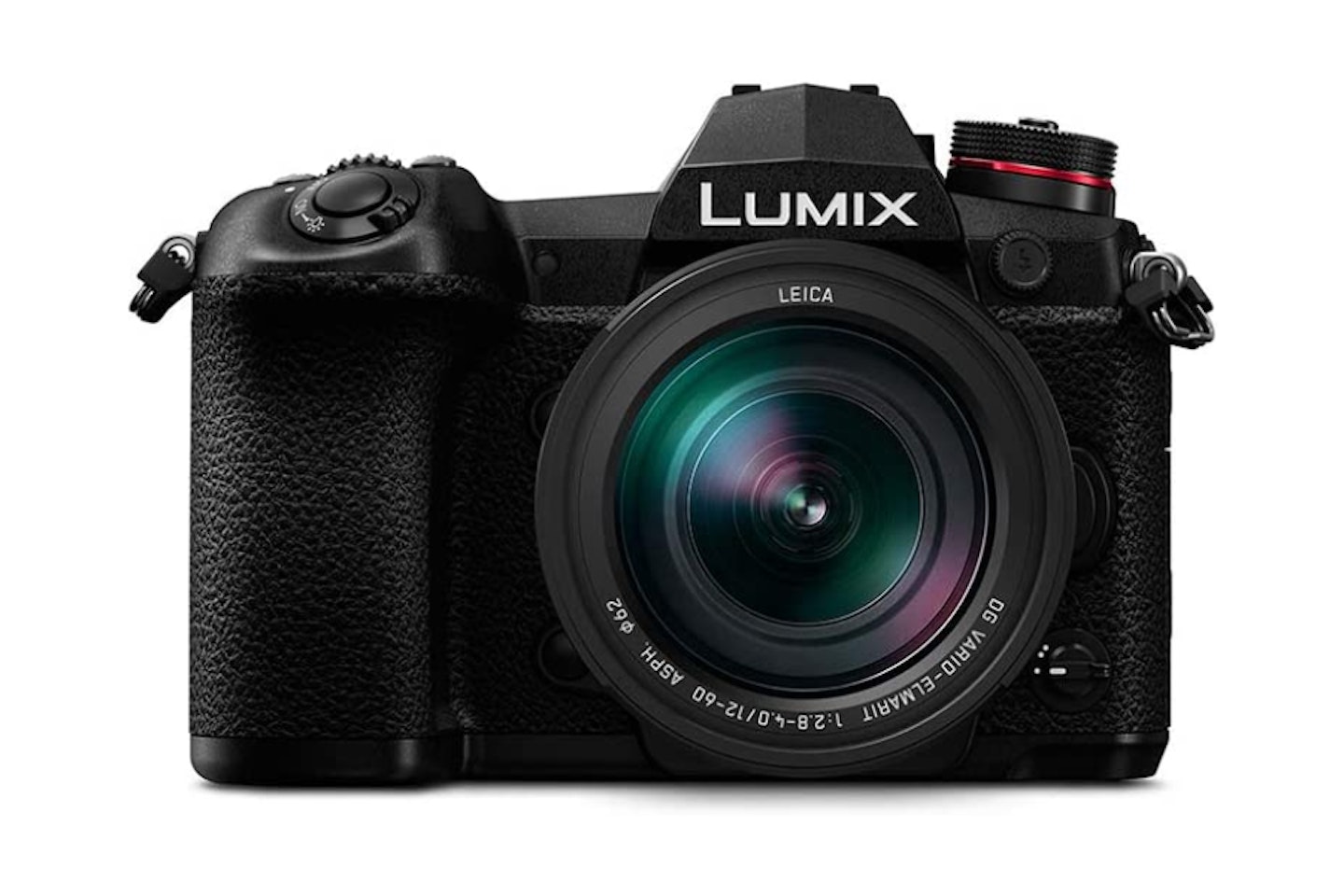
Description
The Panasonic Lumix G9 pretty much contains everything you'll ever need for photography in a sub-£1k package… if you're happy with the occasional caveat. First off, it isn't a traditional high-resolution offering. In fact, the 2X crop of the Micro Four Thirds sensor only offers 20.3MP. However, it gives a lot more in other areas. One is that this camera comes with the benefit of a rapid 20fps continuous shooting speed using the electronic shutter or 6K Photo.
There's also a High-Resolution Shot mode that takes multiple images and stitches them together to create a mammoth 80MP equivalent image that increases the detail massively… as long as everything stays perfectly still! The M43 sensor means every lens gives you double its stated focal length (50mm is a 100mm equivalent if it were on full-frame) and the lenses are great value for money. Also, thanks to a recent firmware update, you can film 4K video at 60fps and 1080p at a super-slow mo 180fps. You'll get dual SD card slots and 6K Photo, a mode that allows you to export 18MP stills from a 4K video – ideal for action. It’s also weather-sealed.
Pros
- High-Resolution Mode
- Fast burst shooting
- Excellent video features
Cons
- AF performance is not the best
- High-resolution shot mode requires the target to be still
Best affordable budget DSLR camera
Description
For many Canon is the go-to brand for DSLR cameras. As we discovered when we reviewed the Canon EOS M50 MkII, you certainly can find some capable kits in the sub-£1000 bracket. For a start, Canon lenses have mounts that are open standard, so you'll have more choices than you can imagine for future upgrades. This one comes with a more than adequate EF-S 18-55 mm f/3.5-5.6 III lens, so plenty of scope there for shot variation.
For the price, this really is the most accessible and practical on-ramp to much better DSLRs down the line. The important thing here is that you'll have access to all of the tactile controls and features that you need - manual focus ring, f-stop and ISO control, plus a great deal of in-camera adjustments. Thanks to Canon, quality 24.1MP stills and 4K video are now within your reach - and all for well under £1000.
Pros
- Canon build quality
- Easily swapped lenses
- Plenty of manual settings
- Ideal first 'serious' DSLR
- Guided menus
Cons
- Newer models have more features- for a price
Best budget DSLR camera for extra features
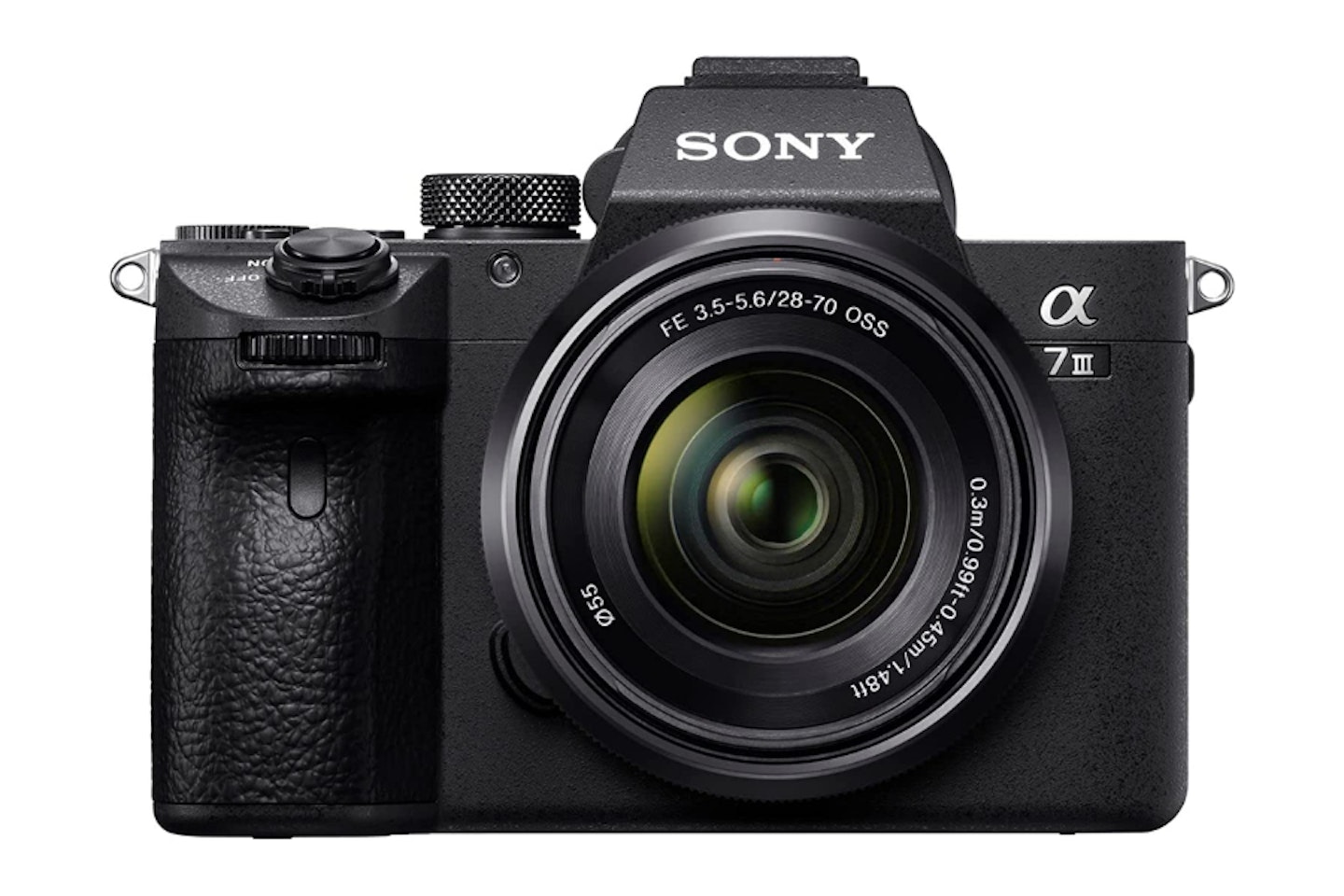
Description
If you want a big resolution but are put off by a heavy and bulky camera, then you should certainly consider the Sony Alpha 7 III. Despite its diminutive casing, it features a 24MP full-frame sensor. The sensor comes with a 5-axis image stabilisation system, which detects movement during the exposure and shifts to compensate. This can allow you to shoot up to 4.5 stops slower than would ordinarily be possible without encountering the blur of camera shake.
While there are comparatively few lenses available for Sony full-frame CSCs, it is possible to use Canon or Nikon lenses with the aid of a converter. The imaging chip is supported by the BIONZ X image processor, and this gives the Alpha 7 III a native ISO range of 100-25,600. It also uses a Hybrid AF system to set the focus, and it features an enormous 399 AF points which cover 45% of the frame area. This makes it easy to lock onto and track moving subjects. NFC and Wi-Fi connectivity mean that you can use your smartphone or tablet as a viewfinder and remote shutter release too. As a super solid high-res compact DSLR, you can't do much better right now.
Pros
- 5-axis image stabilisation
- 4K video
- Tiltable LCD touchscreen
Cons
- Battery performance is not the best - buy a spare
Best value DSLR camera
Description
There's a good reason why Canon feature so heavily in our selection here - they're not only consistently well-regarded by users, they also top the league table for the most cameras over 20MP. This 2000D boasts a 24.1MP APS-C sensor, EF-S 18-55mm f/3.5-5.6 IS II lens and a 3-inch 920k-dot rear LCD screen. However, beyond this and a few cosmetic upgrades, it’s a very similar story. You still get the 9-point phase detection autofocus system, 3fps continuous shooting speed and native ISO range of 100-6400. With so many features at your fingertips, it's no wonder this made the top spot on our lineup of the best Canon DSLR cameras.
As you’d expect, the Canon has an in-built flash, which keeps it in line with the rest of the competition and helps when shooting in low light. Overall, there’s little to separate this from the 4000D, except build quality and megapixels. If you have the budget this is the superior choice, but if you’re looking to spend less, it’s the Canon 4000D.
Pros
- 24.1MP for stunning shots
- Well-designed and easy to handle
- Guided menus
- Excellent choice of compatible lenses
- Canon build quality
- Responsive autofocus
Cons
- Lacking a touchscreen
- Only 3fps burst shooting
- No 4K video
Best budget DSLR cameras of 2024: Buyer's guide
There are usually a couple of things to keep in mind when you’re looking to invest in any technology, and this is especially true when it comes to shopping for the best budget DSLR cameras.
Make room in your budget for storage
Higher resolutions also mean higher image file sizes. Your 45MP camera will be burning through SD cards twice as fast as a 24MP will. So, don’t leave home without plenty of high-capacity spares. Also, pay attention to the speed Class of your card. Class 10 are a good choice for read/write speeds. This is essential if you want to avoid a slight drop in continuous shooting speed when files write to the card. Many mirrorless camera options do compensate for this a little, as there's no mirror to move out of the way with every shot.
Stick to your budget (if you can)
All of our recommendations come from established brands and, as long as you have a modest budget in mind, you could choose any of them and be well on your way as a high-resolution photographer.
On the subject of budget, it's easy to get carried away by features like in-camera AI enhancement and 4K video. But resist the urge to overspend - you'll want your budget to be going into the core features you're going to need: lens, sensor and build quality. So our advice is to keep things simple now and upgrade later if you're hankering for high-tech frills.
Invest in your kit with accessories
Not all of your existing accessories, if you have any, are going to fit or be useful for your new budget DSLR. You may need a set of filters with a different diameter, or spare batteries.
Camera lens essentials include a UV filter to protect your lens as well as improve clarity. You might also go for a polariser to prevent nasty reflections. And, of course, a camera cleaning kit so that you can look after your lens and camera body with nice new brushes, cloths, and supplies.
Consider your lens options
Possibly the most exciting items you can buy for your photographic arsenal are lenses, like a wide-aperture prime lens for capturing stunning landscapes and architecture. If your pick of the best budget DSLR camera has an interchangeable lens, first check the type of fitting your camera will support. Many manufacturers, such as Sony, have their own proprietary lens systems and ranges, so you should partly base your choice on the lenses available.
Protect your investment
A full-size DSLR, especially if you buy additional lenses, will mean getting one of the best camera bags you can afford. Yes, most cameras come with straps and lens covers - but nothing beats keeping your prized kit in a properly cushioned bag or case. If you're planning on doing a lot of outdoor shoots, make sure you have waterproofing or a rain cover for it too. And don't forget extra space for filters, spare batteries and the like.

Best budget DSLR cameras: Frequently asked questions
What's the best budget DSLR cameras for beginners?
As mentioned in our best entry-level cameras article, this comes down to how comfortable you are with camera settings; Not to mention basic photography principles like depth of field, ISO, aperture, and shutter speed. Your choice is also going to be influenced by what you're interested in - and lens options are important here. If you're totally new to photography (other than the point-and-click variety) we recommend a simple camera - like the Canon SX740 HS PowerShot. It has enough manual control to let you practice the basics. If you're already used to a DSLR with some knowledge under your belt, go for the Canon EOS 250D - it's got plenty of control without too many expensive extras.
What does high-resolution mean?
In photography terms, resolution refers to the number of pixels – light-sensitive areas – on a camera’s sensor. Each group of 1 million pixels is counted as a Megapixel and is directly linked to image size. A 24MP sensor will produce images that are 6000x4000 pixels in a 3:2 image ratio; whereas a 45MP sensor boosts this size to roughly 8000x5500, meaning more real estate.
Why are more megapixels better?
The larger image size means you will be capturing more information. You'll have the ability to crop more severely than at a lower resolution without sacrificing image quality. This allows you to recompose a shot in the edit, applying a digital zoom by cropping in image editing software.
Many of the best budget DSLR cameras with high resolution also forgo the anti-aliasing filter. This is an element that sits in front of the sensor. It adds a slight blur to your images to combat an unwanted effect called moiré. Moiré is that zig zag you may have seen in tightly repeated patterns such as clothes or roof tiles. The plus side is that removing this filter allows for some incredibly sharp images.
Are there downsides to high-resolution cameras?
Yes, kind of. Larger image sizes mean you’ll burn through storage at a faster rate since the files are bigger – especially RAW. You will also need faster SD cards. If you have an 8GB card with a 30MB/s transfer rate in your 45MP camera, it’s going to take longer between shots to copy images. In fact, a 64GB memory card will give you anywhere between 400-700 shots – half as many as a 24MP sensor. So, if you like to take plenty of captures this is generally the sweet spot. Equally, because of the extra file size, these cameras will often come with a smaller buffer – the number of shots that the camera can hold in its internal memory while transferring to the SD, so capturing the action at 10fps may only give you a second or less of burst.
You will also notice that the ISO ranges are usually slightly smaller than lower resolutions, which is to do with the smaller effective area of the pixel - meaning they aren’t quite as adept at collecting light. However, in real-world terms, this won’t present an issue in 99% of cases. You can also help your camera’s low-light performance by using a lens with a big aperture, such as f2, f1.4 or f0.8, and of course, using one of the best tripods with longer exposure times.
Kirk Schwarz is one of our resident tech experts. A tech-addicted photographer with more than a decade's experience, Kirk's used to putting new gear through extreme field-testing.
Subscribe to the What’s The Best Newsletter to keep up to date with more of the latest reviews and recommendations from Kirk and the rest of the What’s The Best team.
